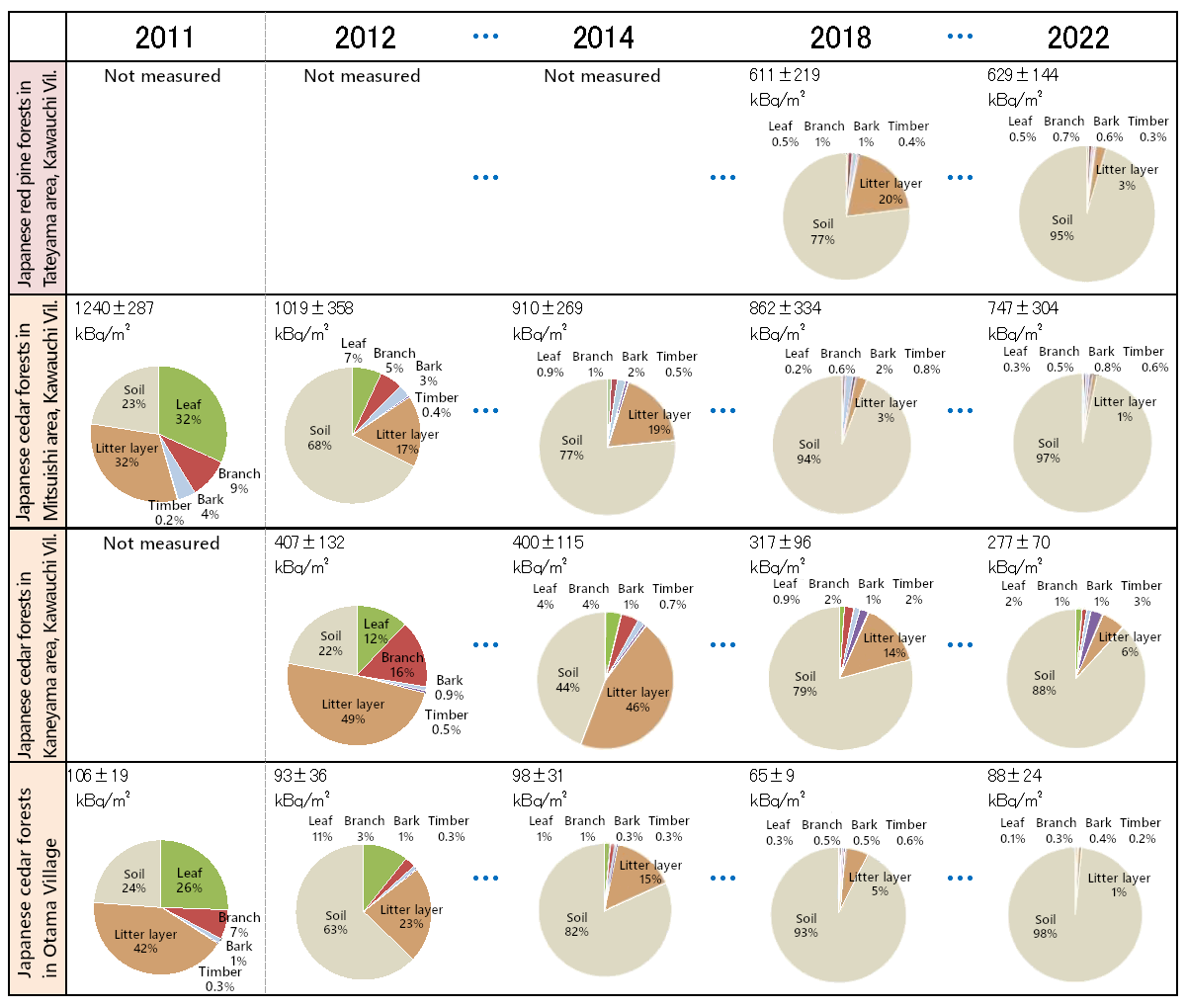Radioactivity Dynamics in forests
(2024)
QI heard most of the forests would not be decontaminated. Does cesium remain in the forests?
AJAEA has been continuously measuring cesium runoff from forests since right after the accident.
The results show that the amount of cesium flowing out of forests per year accounts for a mere 1% or less of the cesium present in forests.
| Survey site | Cesium runoff | Description |
|---|---|---|
| Coniferous forest (Kawauchi Village) |
0.03-0.16 % (Runoff during the rainy season) |
Results for 2013 to 2016. Runoff ratio during the rainy season (April-November) |
| Deciduous forest (Kawamata Town) |
0.02-0.18 % (Runoff during the rainy season) |
Results for 2013 to 2016. Runoff ratio during the rainy season (April-November) |
| Mountainous area | 1.08 % (Annual runoff) |
Observation results for 2013 to 2016. Annual runoff ratio |
The natural decrease rate of cesium due to physical decay is about 2.3%. Given that the runoff ratio is 1% or less, it is safe to assume that the amount of cesium in forests decreases almost solely by natural physical decay.
Then, where in the forests does cesium remain?
In 2011, immediately after the accident, cesium in forests mostly existed in leaves, branches, and the litter layer, but more recently, it has also begun existing in the soil. After having fallen from the atmosphere, cesium first adhered to the tree surface and the ground surface and then slowly migrated to the soil under the litter layer through fallen leaves, rain, and infiltration into groundwater.

Fig.1 Percentage distribution of radiocesium accumulation by site for each study site in FY 2011-2022
(Note: Survey results for FY 2013, FY 2015-2017, and FY 2019-2021 are omitted.)
出典:林野庁HP「令和4(2022)年度森林内の放射性セシウムの分布状況調査結果について」(https://www.rinya.maff.go.jp/j/kaihatu/jyosen/
r4_surveys_on_radioactive_cesium.html)
A further investigation into the depth of the soil contaminated with cesium revealed that most cesium remained within a depth of 3 cm below ground. Future studies are needed regarding whether such cesium will migrate deeper into the soil and whether it will be absorbed through plant roots and circulated, taking into account potential effects on plants and animals.
Related articles
- Is radioactive cesium in forests dispersed by wind? 【Near forests】
- Where were radioactive materials deposited and in what quantities?
- On which minerals does radioactive Cs get adsorbed?
- What is the source of radiocesium in freshwater fish?
- What is the source of radio-cesium in the airborne dust sampling?
